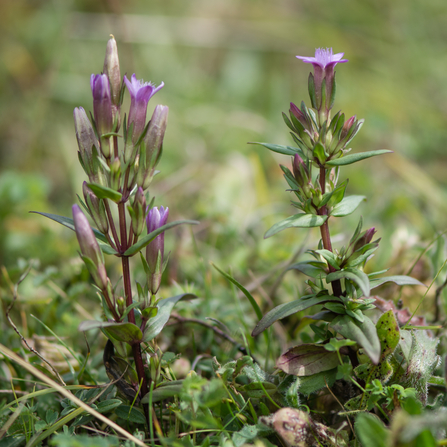
Autumn gentians. Photo by Ian Redding
Protect wildlife for generations to come
©Ross Hoddinott/2020VISION

Autumn gentians. Photo by Ian Redding
This ancient chalk grassland high on the Chilterns escarpment has extensive views over Aylesbury Vale. More than 100 years ago Bacombe Hill was identified by Sir Charles Rothschild as a site to be protected. Subsequently, it became one of the original Rothschild Reserves.
Look out for late colour from the gentians. Our infographic will help you tell the Chiltern gentians from the autumn gentians.
Access: Sloping, steep in places, muddy in places. Kissing gates.
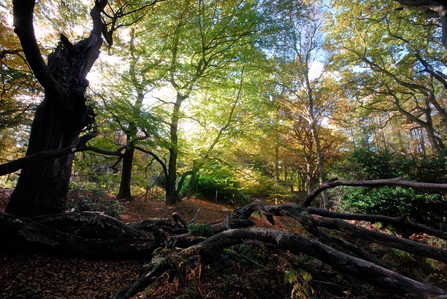
Bowdown Woods by Rob Appleby
Mysterious hidden valleys, sunny glades and patches of heathland, Bowdown Wood is wonderful to explore all year round. At this time of year you can see the seasons begin to change as the leaves slowly start to turn all shades of gold and bronze and fungi begin to appear on the woodland floor.
The 'Bomb Site' section is great for a first time visitor - so named because it was an ammunition store during and after the Second World War, it is a great example of how nature can thrive and develop on a site vacated by people. Many old surfaced tracks create a network through the young birch and oak woodland that has colonised the site. Try the 3/4 mile Wildlife Walk from the car park - it's on old surfaced tracks and ideal for less mobile visitors.
Access: Variable, the reserve is made up of 3 areas:
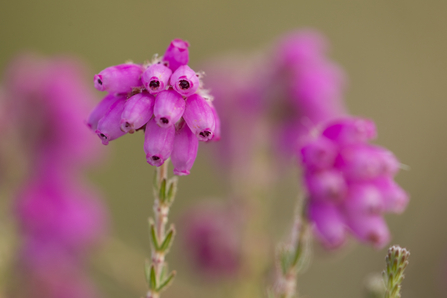
Bell heather. Photo by Mark Hamblin / 2020VISION
Bucklebury Common is mainly broadleaved woodland of oak, ash and beech with younger areas of birch and large areas of heathland. There is also an old avenue of oaks at Chapel Row which are over 400 years old and planted in the late 16th century to commemorate a visit by Queen Elizabeth I.
The common is privately owned by Bucklebury Estate but there is an extensive network of public rights of way to explore. In late summer the flowering heather gives a purple haze over the heathland.
Access: Paths are variable, those on the main plateau are largely flat and even but can become muddy after heavy rain, paths heading north or south off the plateau are steeper but offer wonderful views across the surrounding countryside.

Tufted ducks by Jon Hawkins - Surrey Hills Photography
Calvert Jubilee, east of Bicester, is a haven for birdwatchers. Visit in September and you may see a variety of migrant birds passing through the reserve on their journeys to spend the winter in warmer places.
The reserve's large 'lake' was created by clay extraction for the brick industry. Later, part of the site was a municipal rubbish tip but today Calvert Jubilee is a haven for wildlife.
The lake's steep banks were carefully sculpted to form shallows in front of two bird hides while the creation of three floating raft islands have enabled common terns and waterfowl to nest away from local foxes.
Access: Flat; mostly bumpy but there is a flat surfaced path leading to the hide; gate, steps, bridges; some restricted access due to HS2
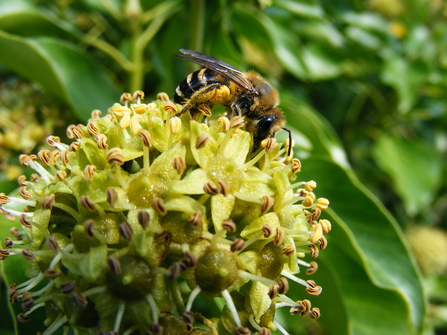
Ivy bee ©Jane Adams
This nature reserve has been created out of an old limestone quarry. A ring of sandy cliffs create a secluded spot where nature and geology are both on show.
The ivy bee, which was first spotted here in 2011, is now well established in south-facing banks of the cliffs. This remarkable mining bee, slightly smaller than a honeybee, was described as new to science in 1993 when it was identified in southern Europe. It was first sighted in Britain in September 2001 when it was found on the Dorset coast. Since then it's spread north and is now found through southern England and south Wales, including these sandy soils west of Abingdon.
Ivy bees emerge in September so now's a great time to visit this reserve and nearby Hitchcopse Pit, which also has exceptional numbers of solitary bees and wasps.
Access: Look out for temporary signs warning of a footpath that's closed while we repair a footbridge. Undulating, steep cliffs; firm paths, some moderate slopes; kissing gates
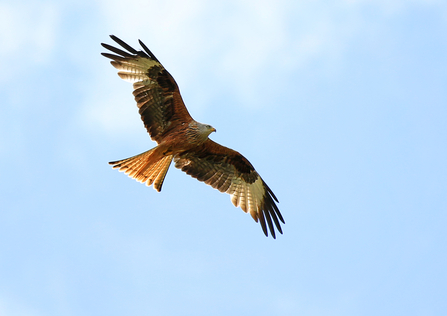
Red kite by Jon Hawkins/Surrey Hills photography
Hidden behind the imposing, but now peaceful, chalkpits at Chinnor, Oakley Hill is made up of old downland, scrub and beech woodland. Chalk grassland like this - once common along the escarpment - is now rare due to a decline in grazing and invasion by scrub, but BBOWT is looking after this rarity by using traditional methods.
Chiltern gentian is the star of this beautiful chalk downland reserve in late summer. There are also a few remaining juniper plants here. Once a dependable early coloniser of open grassland, juniper is now uncommon in the Chilterns.
The Ridgeway National Trail passes below the reserve making it ideal to visit as part of a longer walk.
Access: Sloping ground, firm but bumpy; kissing gate